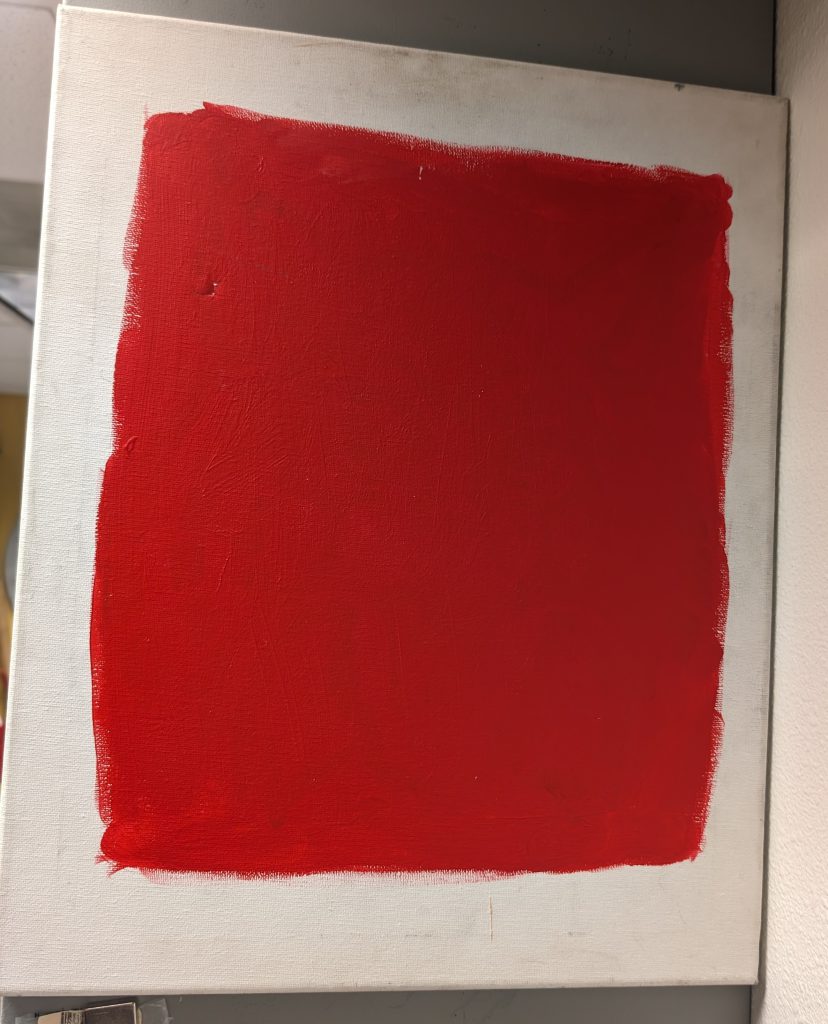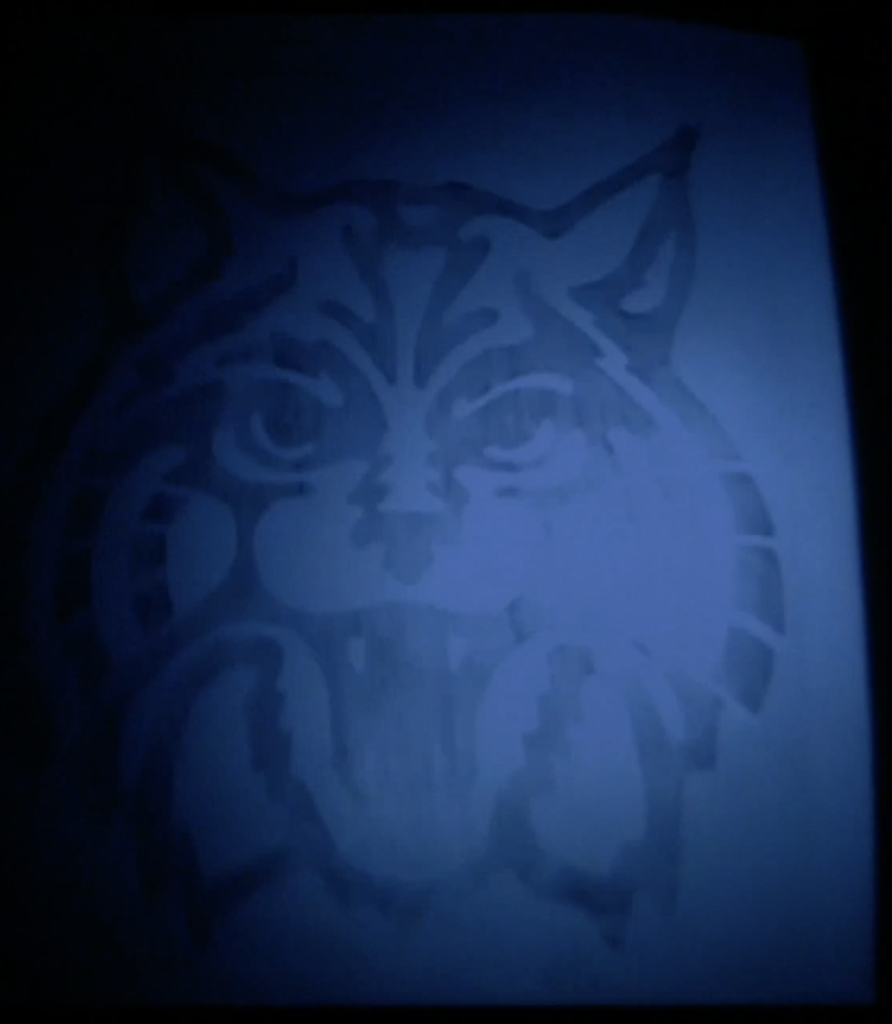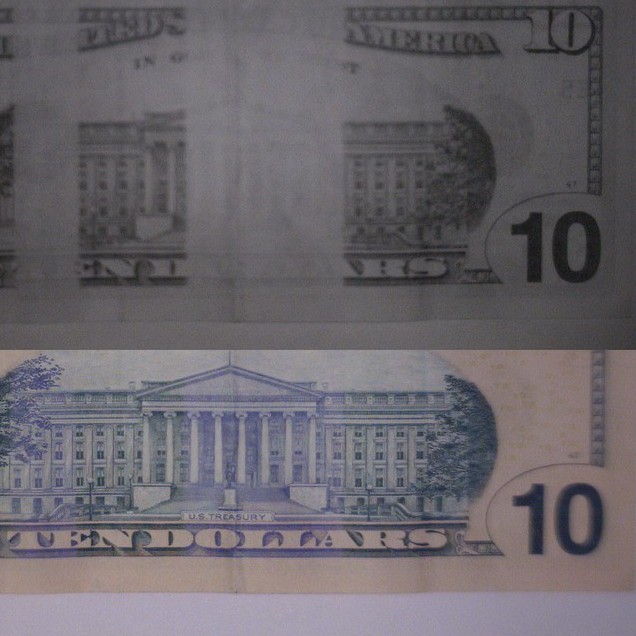Near Infrared Camera
Overview: An infrared camera can allow us to see wavelengths beyond what our eyes can detect. Near IR can be used for medical diagnostics, to study agriculture health and even in seeing different layers of art.
Supplies: Near Infrared camera, tripod, tv, camera to tv connection cable, camera power cable, red painting (Wilbur, Meinel, OSC logo), $5, or $10 bill
Objectives: View objects through a different set of “eyes”. Spot what is under a layer of paint in artwork. See how near IR can be used as a security measure for currency.
Setup:
- Unscrew the bolt and nut attached to the camera base
- Attach the camera base to the tripod with the bolt and nut
- Plug in the power cord to the power side of the camera cable splitter
- Attach the BNC cable end to the camera cable splitter, insert the other end into the green plug on the back of the tv
- Plug in the tv and turn it on
- Check that the light sensor on the camera is taped over
How to run the demo:
- Show the red painting in room light
- Turn off the lights if possible (the images show up better)
- Put the red painting in the field of view of the camera and show that there is an image beneath the red paint


- Show the security strip on the back of a $5 or $10 bill

What’s Happening?
Paint pigments become invisible within the near infrared wavelength range. Near IR cameras project IR light onto an object. The image the camera picks up therefore does not see the painting that our eyes see, but rather sees below the painting. Many artists would sketch with mediums other than paint and then make changes to the final product in paint. We can see those sketches with the near IR camera.
The same can be done with currency. An ink that is invisible in the near IR can be added as a stripe on a bill for security reasons.
Learn more: (external links)

